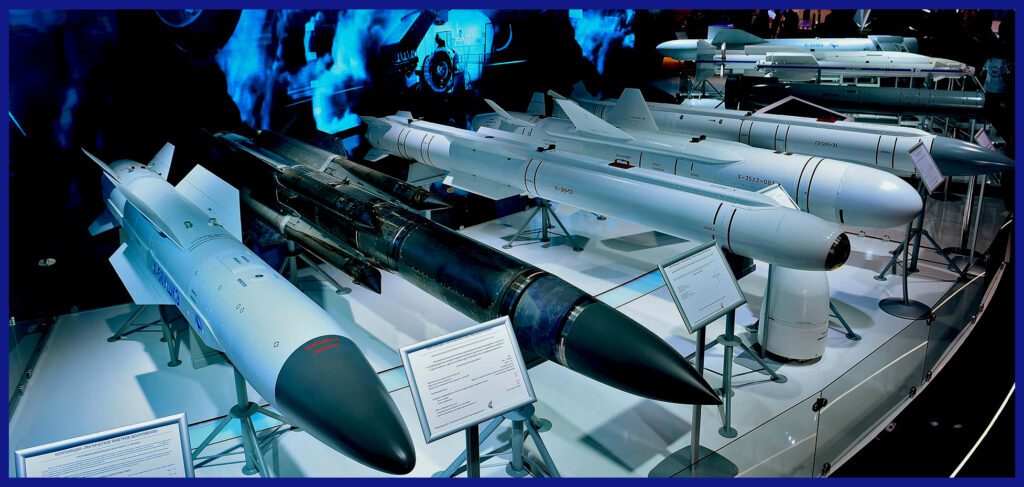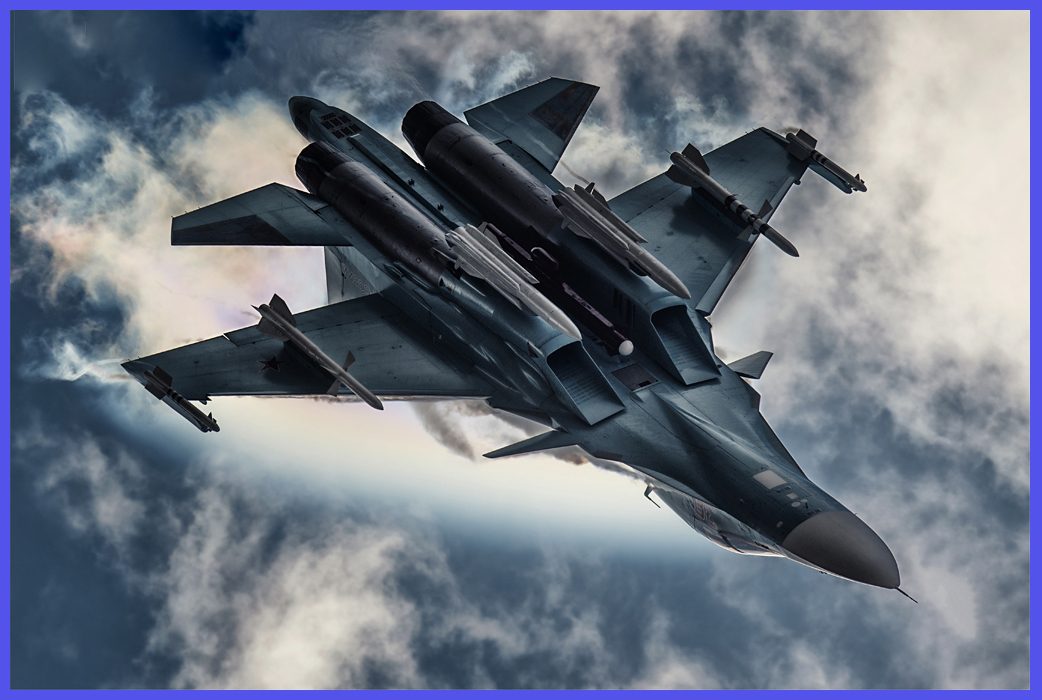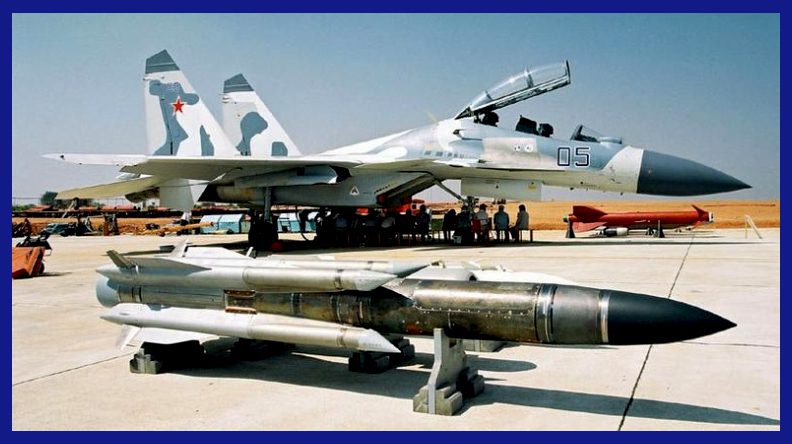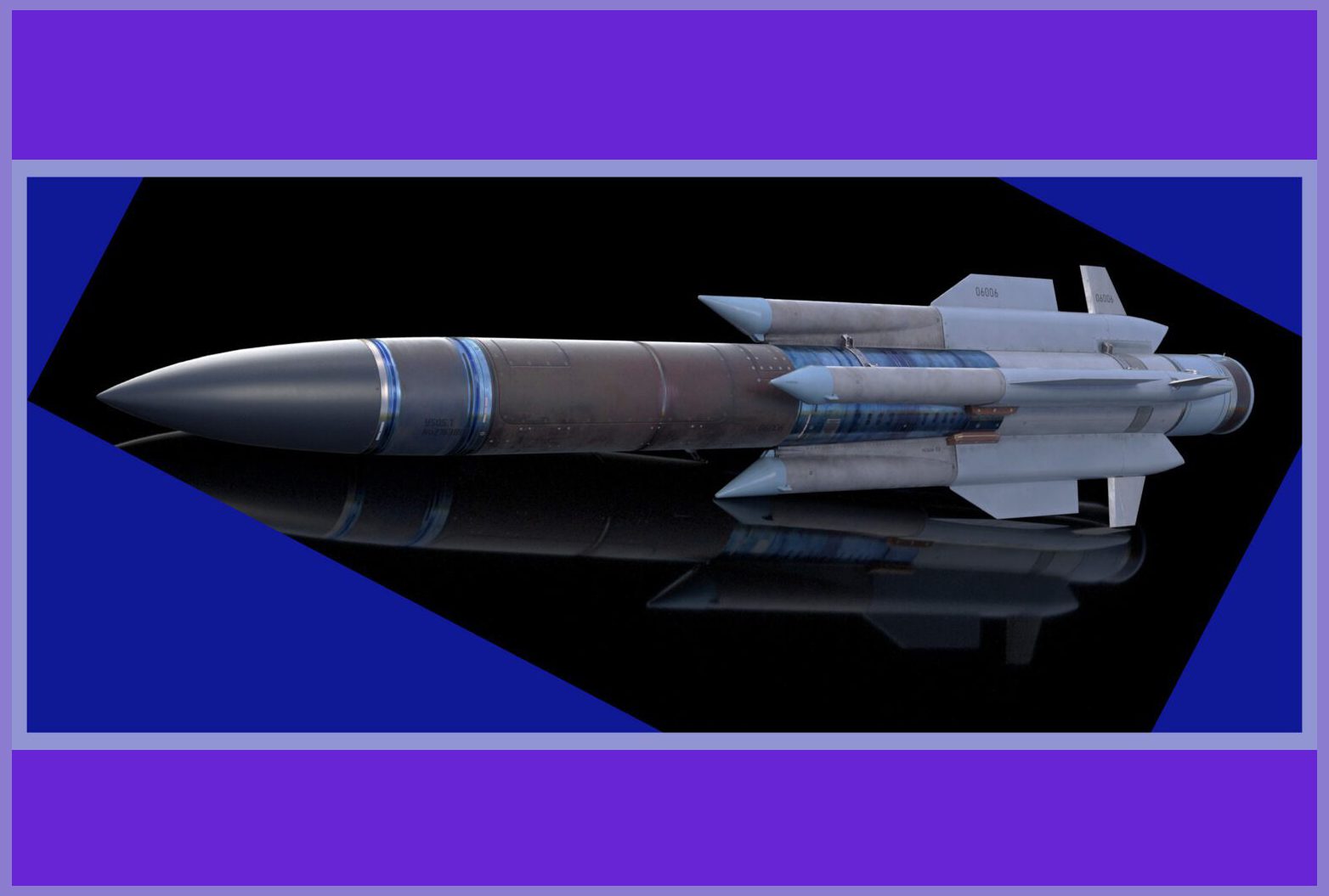The Kh-31 Krypton ASM stands as a formidable testament to the relentless progress and ingenuity in Russian missile technology. Let’s Get Into The Details Of The Kh-31 Krypton ASM, which belongs to the formidable family of Russian air-to-surface missiles developed by the Tactical Missile Armament Corporation (formerly the MKB Reduga Design Bureau). This missile is not just capable of reaching Mach 3.5, but it also happens to be the first supersonic anti-ship missile that can be launched by tactical aircraft.

Since the 1980s, the Kh-31 Krypton has served the Russian military, showcasing its prowess in several conflicts. Moreover, the missile family includes several variants with different guidance systems and warhead types, rendering it an immensely versatile weapon system.
The NATO reporting designation for the missile is AS-17 Krypton, which was specifically designed to be a high-speed anti-radiation missile ( ARM ) capable of taking out enemy radar installations on the ground or any type of sea-based Navy ships. The missile has seen action in several conflicts, including the Gulf War, the Kosovo War, and the Syrian Civil War. Known for its high speed, accuracy, and ability to evade enemy defences, the Kh-31 is a powerful and effective weapon system that has played an important role in modern air-to-surface warfare.

Analyzing The Design Of The Kh-31 Krypton ASM
The Kh-31 Krypton is an advanced anti-ship missile ( ASM ) that is designed to penetrate modern ship defences and inflict significant damage to enemy vessels. The Kh-31 Krypton’s design results from years of research and development by the Raduga Design Bureau, which is known for its expertise in developing missile systems for the Soviet Union and Russia.
In many respects, the Kh-31 is a miniaturized version of the P-270 Moskit ( SS-N-22 Sunburn ) and was reportedly designed by the same man. The missile has a conventional shape with cruciform wings and control surfaces made from titanium. Notably, the missile has a two-stage propulsion system. Upon launch, a solid-fuel booster in the tail accelerates the missile to Mach 1.8, after which the booster is discarded. Subsequently, four air intakes open up, and the empty rocket case becomes the combustion chamber of a kerosene-fueled ramjet, which propels it beyond Mach-4 speed.

The following are some of the key design features of the Kh-31 Krypton ASM
- High Speed: The Kh-31 Krypton is a supersonic missile, capable of reaching speeds of up to Mach 3.5. Its high speed allows it to close in on enemy ships quickly, reducing the time available for the ship’s defences to respond.
- Low Altitude: The missile is designed to fly at low altitudes, typically just a few meters above the water’s surface. This makes it difficult to detect and track with radar, as it can blend in with the clutter of the sea surface.
- Multiple Guidance Systems: The Kh-31 Krypton uses both inertial and active radar guidance systems to home in on its target. The inertial guidance system provides initial targeting information, while the active radar guidance system provides final guidance as the missile approaches the target.
- Multiple Warhead Options: The missile can be equipped with different types of warheads, depending on the mission requirements. The primary warhead is a high-explosive fragmentation warhead that can cause significant damage to enemy ships. Other warhead options include armour-piercing and concrete-penetrating warheads.
- Air-Launched: The Kh-31 Krypton is typically launched from a variety of aircraft, including the Su-30, Su-34, Su-35, MiG-29, and MiG-35. The missile can be launched from a safe distance from the target, reducing the risk to the launching aircraft.

Development of the Kh-31 Krypton ASM
With the increasing proliferation of surface-to-air missiles ( SAMs ) in modern times, it has become imperative for any air force planning offensive action to prioritize the Suppression of Enemy Air Defences ( SEAD ) mission. To accomplish this mission, it is crucial to disable air search radars and fire control radars. To achieve this goal, anti-radiation missiles ( ARMs ) are utilized.
These missiles must have a sufficient range so that the launch platform is out of range of the SAMs, high speed to minimize the risk of being shot down and a seeker that can detect a range of radar types. Although they do not require a particularly big warhead, ARMs are an essential part of any modern air force’s arsenal for accomplishing the SEAD mission

The development of increasingly sophisticated SAMs, such as the MIM-104 Patriot and the US Navy’s Aegis combat system, exerted pressure on the Soviet Union to develop more advanced ARMs. Zvezda, having a background in lightweight air-to-air missiles, approached the problem differently than Raduga. In the mid-1970s, Zvezda had already developed the successful Kh-25 family of short-range air-to-surface missiles, which included the Kh-25MP ( AS-12 “Kegler” ) for anti-radar purposes.
Afterwards, Zvezda began working on a long-range ARM, leading to the first launch of the Kh-31 in 1982. The missile entered service in 1988 and was publicly displayed for the first time in 1991. The Kh-31P was showcased in Dubai, while the Kh-31A was presented in Minsk.

In December 1997, news reports indicated that a limited number of Kh-31 missiles had been delivered to China, although it was also reported that “production had yet to begin.” It was during this period that the Russians sold Su-30MKK ‘Flanker-G’ aircraft to the Chinese. It appears that the initial deliveries were of the original Russian model designated as X-31, which allowed for testing while the KR-1 model was being developed for licensed production. It is possible that local production of the Kh-31 missiles started as early as July 2005.

Later Generation Kh-31 Krypton Variations
Several variations of the Kh-31 Krypton ASM have been developed over the years, each with different capabilities and features. Here are a few examples:
- Kh-31A: The Kh-31A is the standard anti-ship version of the missile, designed to attack enemy ships and other naval targets. It has a range of up to 70 km and is capable of penetrating even the most advanced ship defences.
- Kh-31P: The Kh-31P is a missile variant designed to target enemy air defence systems. It is equipped with an anti-radiation seeker that detects and destroys enemy radars and other electronic equipment. It has a range of up to 110 km and can be launched from various aircraft. The missile seeker is equipped with three interchangeable modules that cover different radar frequency bands, although they can only be replaced at the factory.
- Kh-31AD: The Kh-31AD is a newer version of the missile that combines the capabilities of the Kh-31A and Kh-31P. It is capable of attacking both enemy ships and air defence systems, making it a versatile weapon for use in a variety of situations.
- The Kh-31PK is a missile variation equipped with an installed non-contact fuse, capable of achieving a maximum speed of 900 m/s and a range of 120-160 km. It was specifically designed for use with the Su-27SM, Su-30MKI, and Su-35 aircraft models. The missile has been in serial production since 2009.
- Kh-35: The Kh-35 is a smaller, subsonic version of the Kh-31 designed for use on smaller aircraft and helicopters. It has a range of up to 130 km and is capable of attacking enemy ships and other naval targets.
- Kh-59MK2: The Kh-59MK2 is a long-range air-to-surface missile that is based on the Kh-31 platform. It is designed to attack ground targets, such as enemy bunkers and command centres, and has a range of up to 285 km.
- In 2017, a representative of the Mikoyan company claimed that an air-to-air variant of the Kh-31 missile was in development, specifically intended for use with the MiG-35. However, this claim has not been confirmed by any official sources or reports.
These variations of the Kh-31 Krypton ASM demonstrate the unique versatility of the missile platform, with different versions optimized for different types of targets and missions.

The Kh-31 Krypton, History Of Operations
The Kh-31 Krypton ASM has a long and successful operational history, having been used in several conflicts around the world. Here are some examples of its operational use:
- Gulf War: During the 1991 Gulf War, the Iraqi Air Force used Kh-31 missiles against coalition warships. While it is unclear how many missiles were fired and how many hits were achieved, the missile’s high speed and low altitude flight made it a difficult target for ship defences.
- Kosovo War: During the 1999 Kosovo War, the Serbian Air Force used Kh-31 missiles against NATO aircraft. However, most of the missiles were either intercepted by NATO aircraft or missed their intended targets.
- Syrian Civil War: The Syrian Air Force has used Kh-31 missiles against rebel groups in the ongoing Syrian Civil War. In 2018, a Kh-31 missile reportedly hit an Israeli F-16 fighter jet that was conducting an operation in Syria.
- The missile was reportedly used by the Russian Air Force during the South Ossetian conflict in 2008, according to some sources. Specifically, it was reported that on August 10, 2008, a Russian Air Force Su-34 aircraft attacked a Georgian air defence radar near the city of Gori using Kh-31P anti-radar missiles. The Georgian air defences were disabled to prevent further losses.
- The Kh-31 missile was used during the 2022 Russian invasion of Ukraine. The missile was deployed by Russian forces as a part of their military operations in Ukraine. The Kh-31 was reportedly used in several instances during the conflict, including attacks on Ukrainian military installations and infrastructure targets. The use of this missile has been widely condemned by the international community and has contributed to the ongoing tensions between Russia and other nations.
Overall, the Kh-31 Krypton has proven to be a highly effective and versatile missile platform, with a proven track record in combat situations. Its speed, low-altitude flight, and advanced guidance systems make it a difficult target for enemy defences, while its different variants allow it to be used against a variety of targets.

International Operators Of The Kh-31 Krypton Include
The Kh-31P ARM was introduced into service in the Soviet Union in 1988, while the Kh-31A anti-shipping variant was introduced the following year, in 1989. Unlike its predecessors, it can be installed on almost any of Russia’s tactical aircraft, ranging from the Su-17 to the MiG-31. In 2001, India purchased Kh-31 missiles for use on their Su-30MKI fighter jets, with reports indicating that they bought 60 Kh-31A missiles and 90 Kh-31P missiles. As of now, a total of 11 countries operate this missile system, including Russia.
A few Kh-31P/KR-1 missiles were delivered to China in 1997, but these were apparently for testing and development work. In late 2002 or early 2003, the Chinese ordered Russian missiles, leading to 200 KR-1 missiles in their inventory by 2005. The Chinese press reported in July 2005 that Su-30MKKs of the 3rd Air Division had been equipped with the missiles.

The Kh-31A and Kh-31P Krypton Technical Specifications
- Weight: Kh-31A _ 610 kg ( 1,340 lb ) / Kh-31P _ 600 kg ( 1,320 lb )
- Length: Kh-31A _ 15 ft 5.0 in ( 4.7 m ) / Kh-31P _ 17 ft 5 in ( 5.3 m )
- Diameter: 14 inches ( 360 mm ) both
- Warhead: Penetrating, armour-piercing warhead, weighing 94 kg ( 207 lb ) and Kh-31P ( 87 kg, 192 lb )
- Detonation: Explosive impact upon detonation
- Engine: The missile uses a solid fuel rocket in the initial stage and a ramjet for the rest of its trajectory
- Range: Kh-31A Minimum 7.5 to Maximum 70 km and Kh-31P maximum range 110 km
- Speed: Mach 2.5 lowest to Mach 3.5
- Guidance: Kh-31P _ Inertial guidance with active radar homing and Kh-31P _ Inertial guidance with passive radar
- Launch Platform: All operational Russian Fighter aircraft which include: Su-27SM, Su-30MKI, Su-25, Su-34, Su-35, MiG-29M, MiG-29K, Su-24M and Su-33

Alongside this article, seize the exclusive opportunity to acquire premium-scale diecast models of legendary Russian fighter jets, including the Sukhoi SU-57 Felon, SU-30SM Russian Knights, Sukhoi SU-34 Fullback, and Mikoyan MiG-29 Fulcrum. Available only at Air Models, these remarkable and iconic long-range military fighters boast impeccable track records and are now purchasable on AirModels with worldwide delivery. Click here now to secure your piece before the limited stock is depleted.

In conclusion, the Kh-31 Krypton anti-ship missile is a formidable weapon system that has been developed and refined over decades of research and development. With its high speed, low altitude flight, and advanced guidance systems, it is capable of penetrating even the most advanced ship defences and causing significant damage to enemy vessels. Its multiple warhead options and various variants make it a versatile platform that can be adapted for use in a variety of missions and situations.
The Kh-31 Krypton’s proven operational history is a testament to its effectiveness, and it remains a powerful tool in the arsenals of various nations around the world. Its advanced design and capabilities make it a valuable asset for any military seeking to maintain its strategic edge in modern warfare.

Important Announcement for Our Valued Readers!
After an article is published, updates or changes may have occurred beyond the time of publication. Therefore, it is important to be aware that certain information in the article might be outdated. To ensure the most accurate analysis, verifying the content with the latest sources is highly recommended.
However, we are dedicated to delivering outstanding articles on military products and global updates. Maintaining quality and smooth operation requires resources. Your support sustains our efforts in providing insightful content. By purchasing high-quality products through our affiliated links, you help us keep our platform alive and acquire top-notch items. Your unwavering support is invaluable and inspires us to strive further.
We welcome your suggestions and requests for more information, as we value feedback from our readers. If there’s specific defence material or equipment not covered on our site, please share your request in the comments. We’ll strive to research and provide the required information. We sincerely thank you for your unwavering interest in our website, and we eagerly anticipate hearing from you! Enjoy your reading experience!

3 thoughts on “Let’s Get Into The Details Of The Kh-31 Krypton ASM”